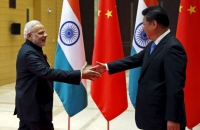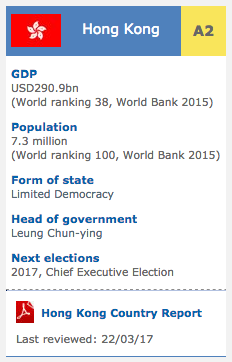Philippines: Secretary Rodolfo A. Salalima, Department of ICT of the Republic of The Philippines
2017/04/19

Secretary Rodolfo A. Salalima of the Department of ICT says the government has three priority areas for ICT: expanding the broadband network with public free Wi-Fi; E-Government, with the introduction integrated online government portal; and moving the BPO services to the countryside.
Could you please share your views on the impact that the government’s 10-point Economic Strategic Plan and the National Broadband Plan are producing in the ICT sector?
All the Government plans on the ICT sector are managed by our Department and we have focused them to create an easy business environment in the country.
Access to communications is a human right and we see it as an essential service for our people.
We are looking forward to fulfilling our objective of building the necessary infrastructure in the Philippines. The president has ordered us to achieve three things: The broadband network with public free Wi-Fi, E-Government, with the integrated online government portal, and moving the BPO services to the countryside since they are too concentrated in metro Manila.
I want to create a BPO summit to be prepared for this evolution of the sector. This will include all the stakeholders in the BPO services and related business because they are as well significant. For example, I was talking recently to an American company that wants to localise its BPO services here and we agreed that before they settle we will have to inform technical schools in the area so that they can prepare the workforce for them.
We are as well implementing the project Tech4ed which is designed to help on the empowerment of education through technology. We have 8 offices around the country and we want to expand it to 17 to reach all the regions. We conduct seminars for people within the government and outside so they can learn how to implement IT solutions in their day-to-day.
This is as well intended to reach the unemployed so they can get the skills to finally find a job.
The Government of the Philippines is making efforts to facilitate money inflow to the country, with initiatives like the economic zones or bilateral agreements to attract ODA. What is the significance of regional integration at the same time as talking about the ICT?
Regional integration is very significant because of the globalised economy that we are by presently living in. Our country alone may not be able to compete in the international arenas as strongly as we can as ASEAN so I see this regionalization as a very positive measure. This is our option to be really competitive.
In this regionalization, the country has established a long-lasting relationship with Japan. What are the synergies between both nations that you would highlight?
It is clear that nations like India, China and of course Japan are seeing the potential of ASEAN. I would like to highlight the funding, which is very significant, but as well the knowledge that Japan brings since it is additional advanced technologically and we can learn from them.
For example, recently we welcomed the Japanese Minister of ICT because we were doing the transition from analogue to digital TV using the Japanese standard.
I am going as well early April 2017 to Japan and we are going to sign an MOU between the Japanese Ministry of data and our Department of ICT to collaborate on next needs.
Being at the forefront of the 4th Industrial Revolution and investing in broadband infrastructure could benefit the Philippines greatly, considering that each 10% increase in digitalisation and broadband penetration sparks GDP by 1.38% according to World Bank data. How can the Philippines be a leading country in terms of ICT?
Nowadays India is the number one in world BPO with the Philippines in the second place, but we are by presently leading in “voice BPO services”. BPO generated revenues of around 22 billion in 2015 in the Philippines creating 1.3 million jobs.
We plan to double the number of BPO by 2022 so that the revenues from those will be higher than the revenues sent by the Overseas Filipinos.
Japanese companies are very keen to expand their business in the Philippines. What is the trigger for that, why do you think Japanese companies have such an interest in this country?
I think it is a mixture of different factors; we have a strategic location, our people speaks English and we boast of good engineers. In some other nations, this may as well be authentic, however, we are close to our client markets which makes it easier to adapt to the strict working requirements that Japanese companies usually have.
I would like to get a bit deeper into the national broadband project because it is a very ambitious project. How is the Government going to finance it? Is there room for PPPs in it?
Yes, there are PPP’s, funding from other nations and the world bank and some private companies that want to be partners in the management of the broadband. There are tenders from Europe, China, and others. We are not starting from scratch because we are connected to the national power grid that has a telecommunications network which is not fully utilised and we will be able to use around 10.500 optic fibre lines.
You have been in the ICT sector a long time and representing the country all over the world, with this experience in mind, what is the legacy that you would like to leave as Secretary of ICT?
I would like to leave a good digital infrastructure for my country and train and create a citizenry to be functional and digital literate at the least. Because as I said before, everyone has the right to communicate and have access to data.
- Related Articles

Climate change laws around the world
2017/05/14 There has been a 20-fold increase in the number of global climate change laws since 1997, according to the most comprehensive database of relevant policy and legislation. The database, produced by the Grantham Research Institute on Climate Change and the Environment and the Sabin Center on Climate Change Law, includes more than 1,200 relevant policies across 164 countries, which account for 95% of global greenhouse gas emissions.
Asia Economic Roundup: July 2016
2016/07/18 Without a doubt Britain’s decision to abandon the European project will be remembered globally as a wake-up call for political elites around the world. It seems the people chose to go against immediate economic interest and accept an extra financial turmoil in order to address deeply seated social and identity issues. Although Asia’s exposure to the UK is relatively limited and this is not exactly a “Lehman Moment”, nonetheless we can expect a lively debate as policymakers in Asia look for an appropriate response to address the needs of vulnerable households.
Inflation subdued, employment up
2015/12/27 Strong domestic request and increased government spending helped sustain high levels of economic expansion in the Philippines throughout 2015, though a slight slowdown was observed late in the year as request from the country’s major trading partners eased.
Manufacturing made the biggest contribution to GDP increase
2015/02/14 Despite declining from the highs of 2013, the Philippines’ economy showed marked resilience in 2014, as it battled back from the impact of a devastating typhoon late last year to give a strong in general performance. Economic increase was driven by strong foreign direct investment (FDI), which surpassed government targets well before the end of 2014, alongside remittances and expansion in the real estate, business process outsourcing (BPO) and mining sectors..jpg)
Amando Tetangco Jr., Governor of the Central Bank (BSP)
2014/01/03 The first upgrade came on March 27 from Fitch, and Standard & Poor’s followed just over a month later, lifting the Philippines out of the junk bond status and placing it among the world’s elite 70 nations deemed suitable for business, where government and the private sector both are capable of paying their obligations. Ultimately, this translates into lower borrowing costs and, of course, higher investor confidence. Thanks to robust GDP growth, the number of bank loans has increased, while asset quality has improved, says the report.
- Philippines News
-
- PHILIPPINES: In the Philippines, infrastructure program could grant businesses 'manna from heaven'
- PHILIPPINES: In the Philippines, infrastructure program could grant businesses 'manna from heaven'
- AFGHANISTAN: UNWTO: International tourism – strongest half-year results since 2010
- NORTH KOREA: Philippines' Duterte calls North Korea's Kim a 'fool' over nuclear ambitions
- PHILIPPINES: Philippines: Rebels Back ‘Fatwa’ Against Violent Extremism
- PHILIPPINES: Ernesto M. Pernia Secretary of Socioeconomic Planning of the National Economic and Development Authority (NEDA).
- Trending Articles
-
- EUROPEAN UNION: UK seeks to 'align' with EU on data protection rules
- BAHRAIN: Bahrain issues new rules to encourage fintech growth
- CHINA: Chinese-supported infrastructure projects change Zambia's landscape
- CHINA: China’s Aluminium Production Drops for Second Consecutive Month
- KENYA: Kenya to hold fresh presidential election on October 17
- TANZANIA: Gas - Women Yet to Benefit From National Cake Tanzania












